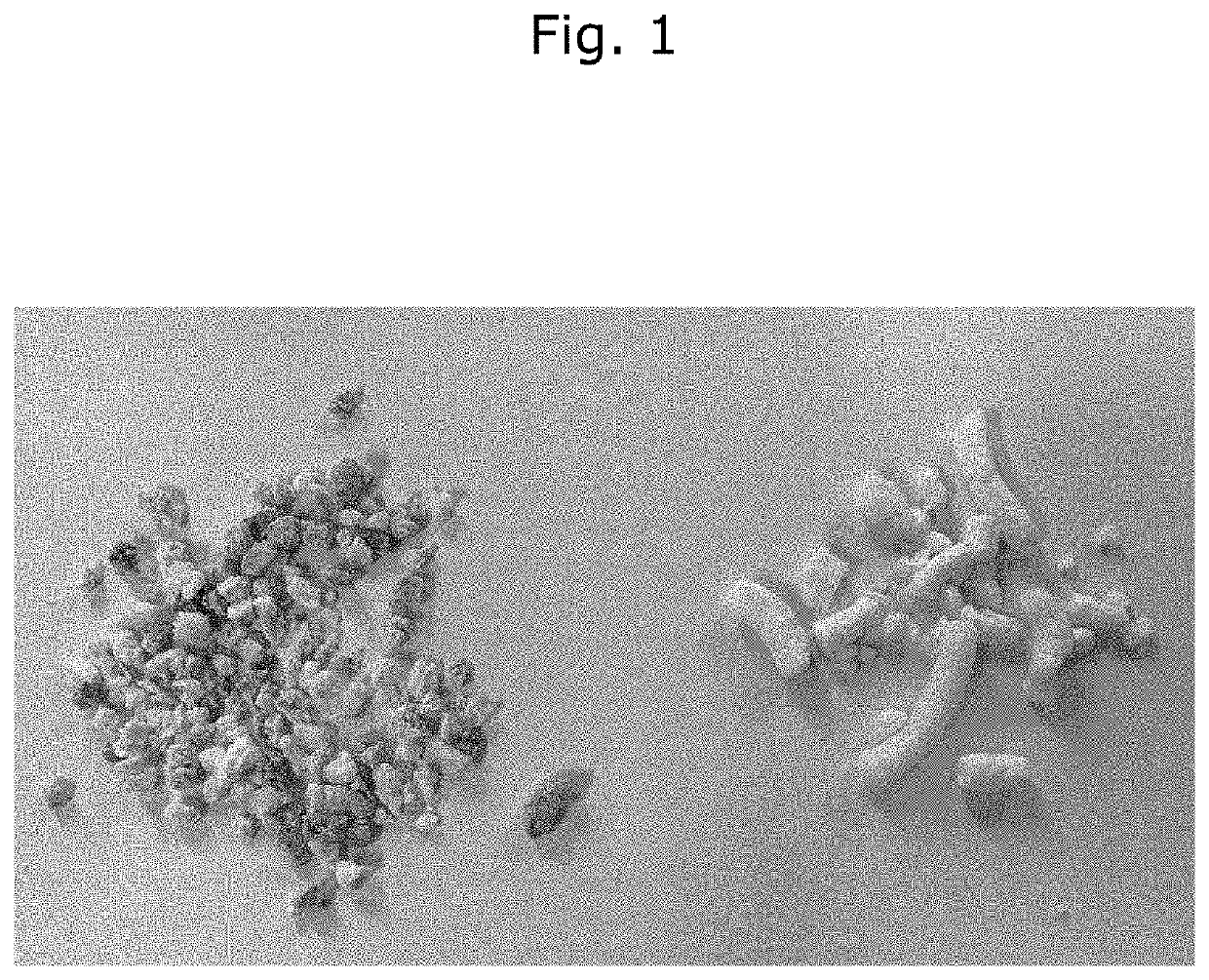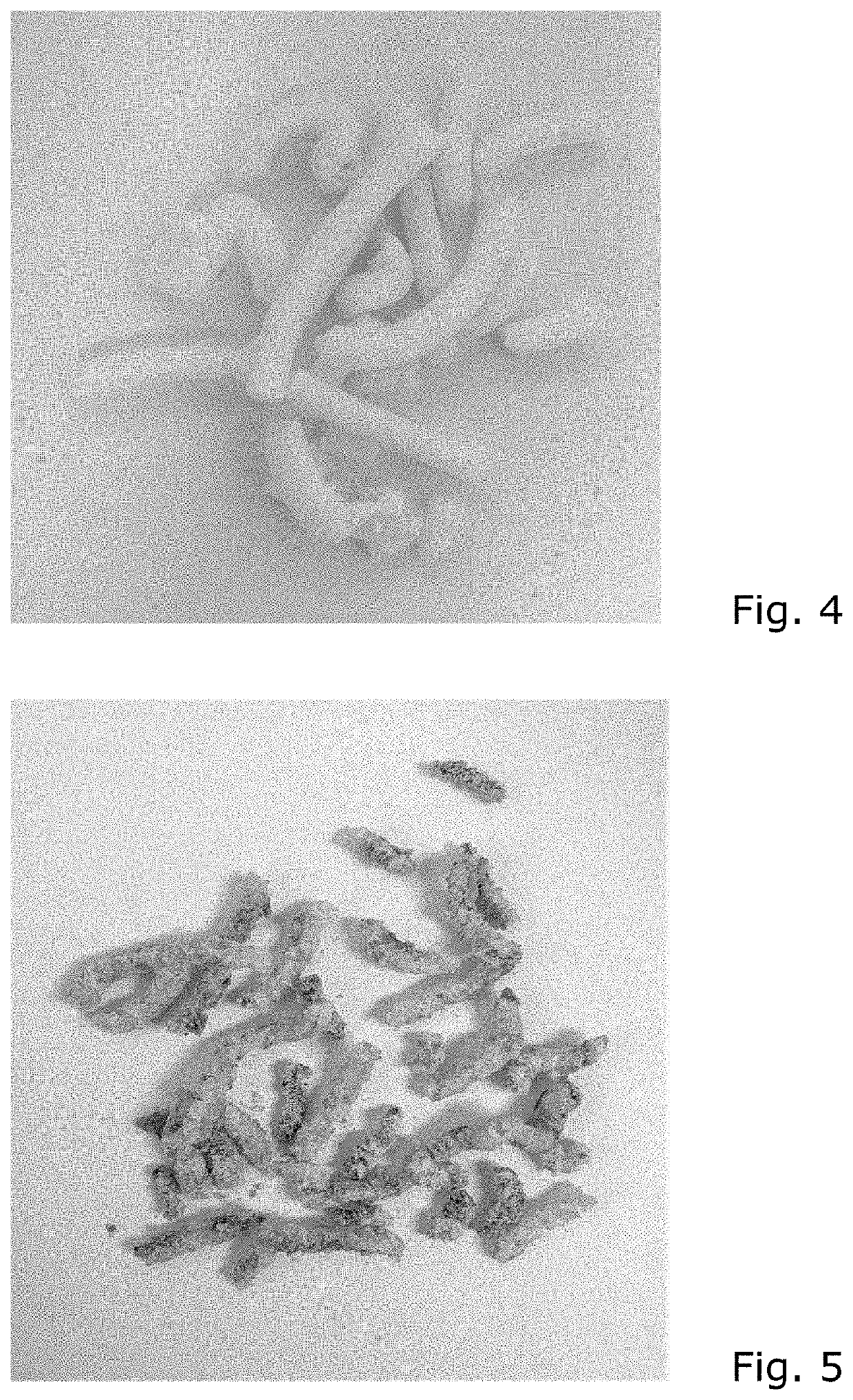Method for Producing Extruded Puffed Protein
a protein and protein technology, applied in the field of protein products made using extrusion technology, can solve the problems of difficult chewing, rapid hardening of high-protein nutritional bars, and onset of hardening of high-protein nutritional bars, and achieve the effect of easy milling and outstanding functionality
- Summary
- Abstract
- Description
- Claims
- Application Information
AI Technical Summary
Benefits of technology
Problems solved by technology
Method used
Image
Examples
examples
Production of a Mill-Able Extruded Puffed Whey Protein
[0043]WPI (Provon® 190, Glanbia Nutritionals, Monroe, Wis. USA) powder and an acidified WPI (Bevwise® A-102W, Glanbia Nutritionals) powder were admixed at a ratio that should result an estimated pH 5.3 for the admixture (i.e., 17% Bevwise® A-102W, 83% Provon® 190). The dry mixture was then fed into the extruder with enough water to achieve an approximate 27% moisture content. The addition of water was the only “pretreatment” performed on the admixture. The mixture was then fed into a twin-screw extruder.
[0044]Temperature was adjusted to produce multiple runs for comparison, and observations indicated that lower temperatures yielded a more uniform “puffed” product, but it was more prone to surging and inconsistency in the result. Higher temperatures yielded slightly less puffing and product cohesion, which was selected as the target result. Product runs were therefore conducted at higher temperatures within the range of 120 degree...
PUM
| Property | Measurement | Unit |
|---|---|---|
| Temperature | aaaaa | aaaaa |
| Fraction | aaaaa | aaaaa |
| Fraction | aaaaa | aaaaa |
Abstract
Description
Claims
Application Information
 Login to View More
Login to View More - R&D
- Intellectual Property
- Life Sciences
- Materials
- Tech Scout
- Unparalleled Data Quality
- Higher Quality Content
- 60% Fewer Hallucinations
Browse by: Latest US Patents, China's latest patents, Technical Efficacy Thesaurus, Application Domain, Technology Topic, Popular Technical Reports.
© 2025 PatSnap. All rights reserved.Legal|Privacy policy|Modern Slavery Act Transparency Statement|Sitemap|About US| Contact US: help@patsnap.com



